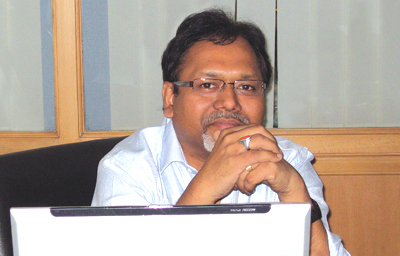INDIAN ARMED FORCES CHIEFS ON OUR RELENTLESS AND FOCUSED PUBLISHING EFFORTS

The insightful articles, inspiring narrations and analytical perspectives presented by the Editorial Team, establish an alluring connect with the reader. My compliments and best wishes to SP Guide Publications.

"Over the past 60 years, the growth of SP Guide Publications has mirrored the rising stature of Indian Navy. Its well-researched and informative magazines on Defence and Aerospace sector have served to shape an educated opinion of our military personnel, policy makers and the public alike. I wish SP's Publication team continued success, fair winds and following seas in all future endeavour!"

Since, its inception in 1964, SP Guide Publications has consistently demonstrated commitment to high-quality journalism in the aerospace and defence sectors, earning a well-deserved reputation as Asia's largest media house in this domain. I wish SP Guide Publications continued success in its pursuit of excellence.
A Word From Editor

A key aspect of the IAF’s force build-up programme is to not only regain its erstwhile combat jet fighters’ strength of 39½ squadrons but also to augment it further to 42 squadrons by 2022
As it celebrates its 80th anniversary, the Indian Air Force (IAF) may have just one wish to make before blowing out the candles on the birthday cake—modernise and transform. Indeed, the IAF is truly in the middle of an amazing phase of metamorphic modernisation in a bid to transform itself into a ‘force’ with full-spectrum capabilities at par with the leading air forces of the world.
The IAF has come a long way since its inception in 1932 when it began with half a dozen officers and a few Wapiti aircraft. Today, the men and women ‘in blue’ of the world’s fourth largest air force can proudly look on those years, having bravely faced challenges not only from the enemy but also have operated in some of the most hostile terrain in the world. The IAF of tomorrow should be ready to scramble to guard India’s enhanced strategic and security interests that extend to not only from the Strait of Hormuz to the Strait of Malacca but much beyond. For this, it is of paramount importance to augment the IAF’s entire range of capabilities—from precision attack weapons to combat and transport aircraft to UAVs and heliborne operations, besides ushering in an era of vigorous research and development with active private sector participation. No wonder the acquisition of force multipliers like airborne warning and control systems (AWACS), mid-air refuelling aircraft, advanced radars and aerostats—all crucial to force potency—have been on the IAF’s extended shopping list.
Speaking on the status of his force to the media in June this year, Air Chief Marshal N.A.K. Browne had said that key year for the IAF would be 2022. “All the contracts which were signed during the Eleventh Five Year Plan, will be executed till 2017. At least 65 to 70 per cent of force build-up will be accomplished by 2017.” A key aspect of the IAF’s force build-up programme is to not only regain its erstwhile combat jet fighters’ strength of 39½ squadrons but also to augment it further to 42 squadrons by 2022 (end of Thirteenth Plan). In all, the IAF could spend as much as $100 billion in the next decade towards realising it’s sanctioned ‘perspective plans’. Air Chief Marshal N.A.K. Browne, Chief of the Air Staff, IAF, in an interview with SP’s Aviation, spoke in detail about IAF’s capacity enhancement plans to meet future security challenges.
On the civil aviation front, R. Chandrakanth points out as to how mid-size jets are labelled as the future of business travel being sought out by most of the contemporary corporate leaders, while Joseph Noronha writing on regional aviation in India feels that a fleet of small sturdy turboprops is what the doctor ordered to rapidly take aviation services to the remote reaches of the country.
In this, ‘Air Force Special’ issue, we not only take a look at the IAF’s ongoing endeavours in its flight to achieve the desired capabilities, but also on the burgeoning responsibilities of the private sector in the aerospace field in building them for the IAF. Creating the much desired and much cherished self-reliance to meet the requirements of the country’s aerospace power perhaps would be the best way to salute the IAF, which should ideally aim for a 50-combat squadron force by say 2032, when it could happily put 100 candles on its anniversary cake.
Jai Hind!





